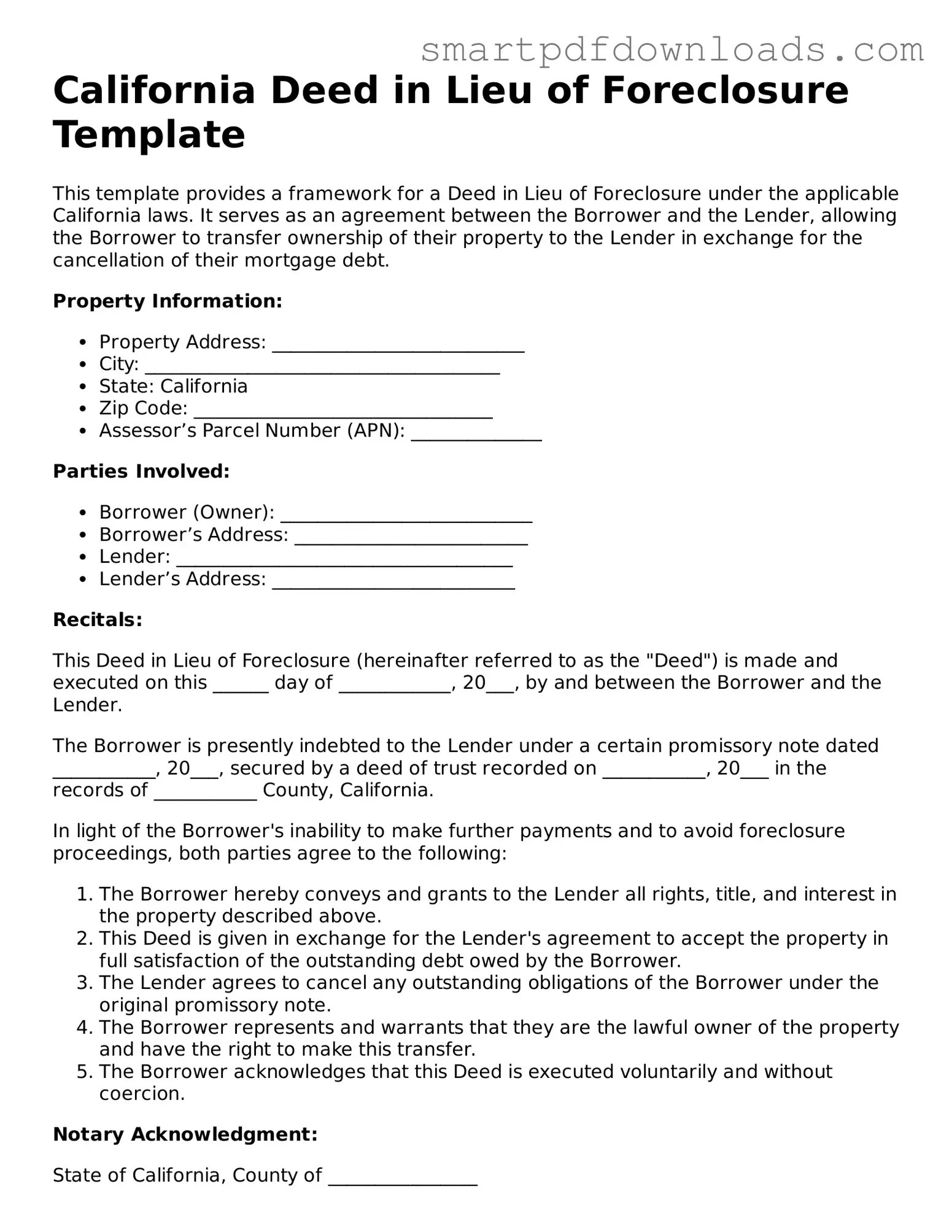California Deed in Lieu of Foreclosure Template
This template provides a framework for a Deed in Lieu of Foreclosure under the applicable California laws. It serves as an agreement between the Borrower and the Lender, allowing the Borrower to transfer ownership of their property to the Lender in exchange for the cancellation of their mortgage debt.
Property Information:
- Property Address: ___________________________
- City: ______________________________________
- State: California
- Zip Code: ________________________________
- Assessor’s Parcel Number (APN): ______________
Parties Involved:
- Borrower (Owner): ___________________________
- Borrower’s Address: _________________________
- Lender: ____________________________________
- Lender’s Address: __________________________
Recitals:
This Deed in Lieu of Foreclosure (hereinafter referred to as the "Deed") is made and executed on this ______ day of ____________, 20___, by and between the Borrower and the Lender.
The Borrower is presently indebted to the Lender under a certain promissory note dated ___________, 20___, secured by a deed of trust recorded on ___________, 20___ in the records of ___________ County, California.
In light of the Borrower's inability to make further payments and to avoid foreclosure proceedings, both parties agree to the following:
- The Borrower hereby conveys and grants to the Lender all rights, title, and interest in the property described above.
- This Deed is given in exchange for the Lender's agreement to accept the property in full satisfaction of the outstanding debt owed by the Borrower.
- The Lender agrees to cancel any outstanding obligations of the Borrower under the original promissory note.
- The Borrower represents and warrants that they are the lawful owner of the property and have the right to make this transfer.
- The Borrower acknowledges that this Deed is executed voluntarily and without coercion.
Notary Acknowledgment:
State of California, County of ________________
On this _____ day of ____________, 20___, before me, ______________, a Notary Public, personally appeared ________________________, known to me or proved to me on the basis of satisfactory evidence to be the person(s) whose name(s) is/are subscribed to the within instrument, and acknowledged to me that they executed the same in their authorized capacity, and that by their signature(s) on the instrument the person(s), or the entity upon behalf of which the person(s) acted, executed the instrument.
WITNESS my hand and official seal.
Signature: ___________________________
This document does not constitute legal advice. It is advisable to consult with a legal professional to ensure compliance with applicable laws and to address specific circumstances.
